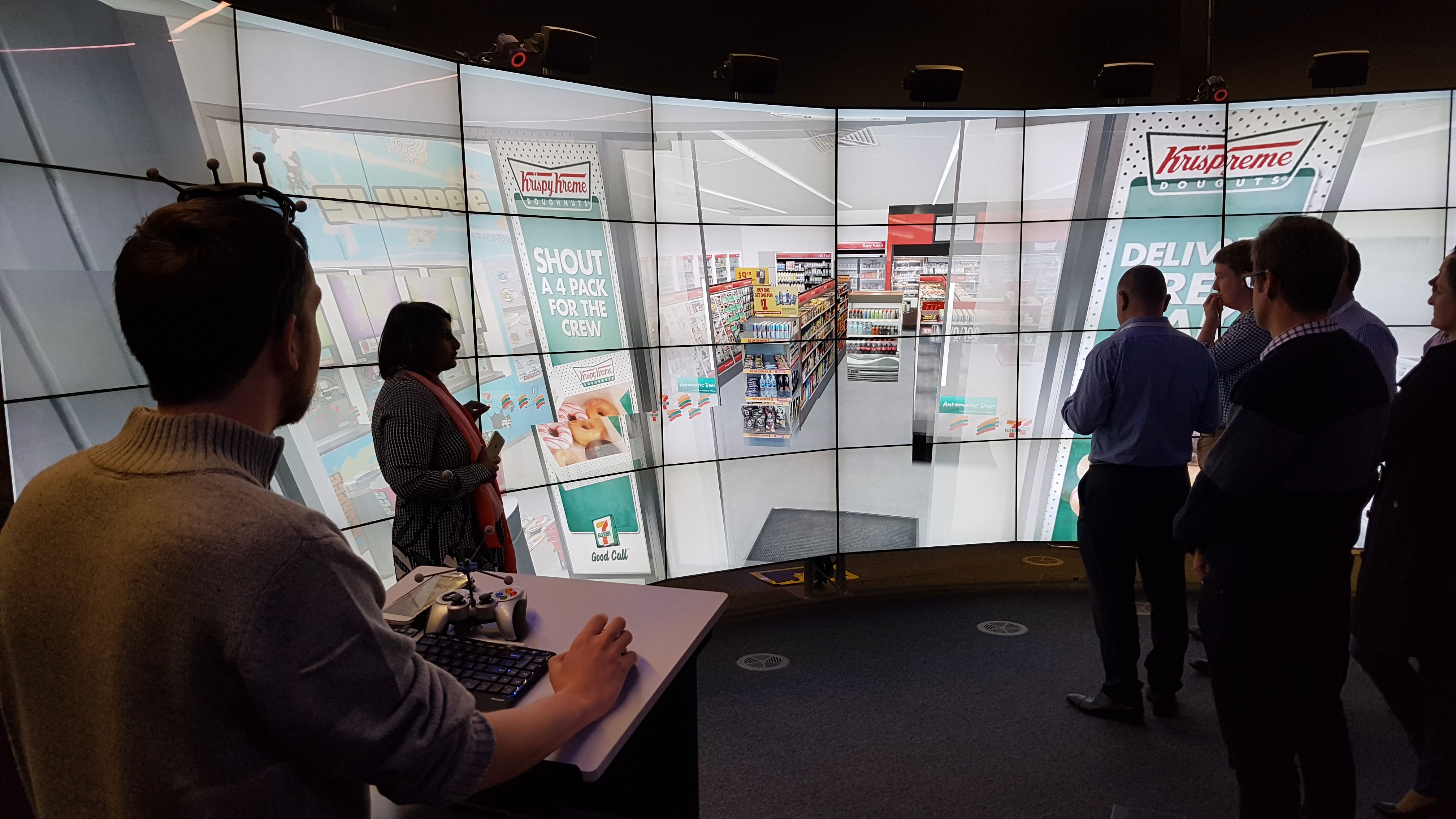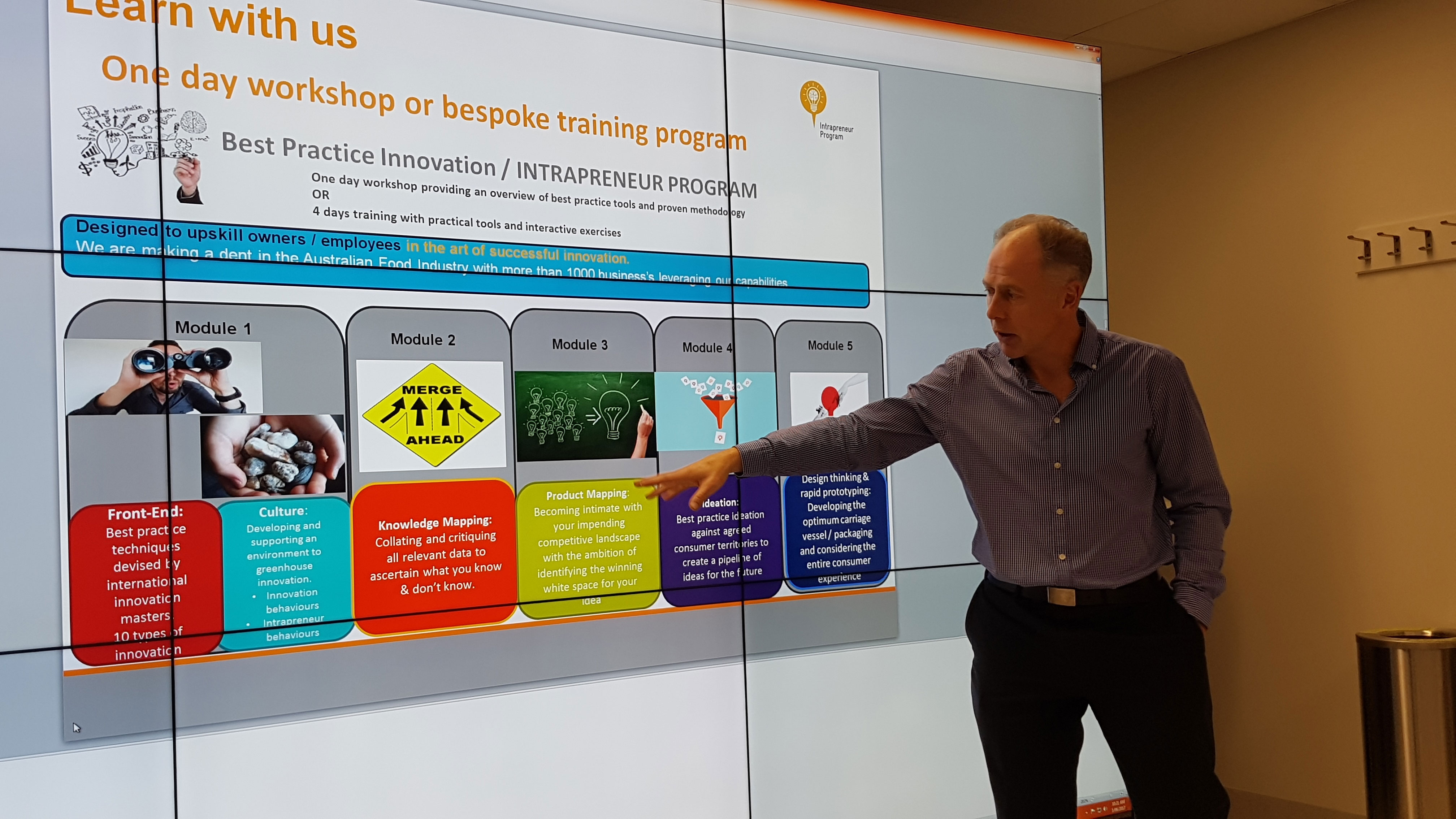Ben Hagemann
June 15, 2017
A visit to the Monash University Food Innovation Centre (FIC) proved to be one of the highlights of the recent Study Tour of Melbourne, hosted by the Australasian Association of Convenience Stores.
Opened in 2012 by Mondelez International in conjunction with the Victorian Government, the Centre became part of Monash University in October 2016, and provides Australia’s food industry with product development services like consumer-aided design, as well as research capabilities in food chemistry, packaging design and food ethics.
Dr Angeline Achariya, CEO of the Food Innovation Centre, explains the benefits of front-end consumer-aided services.
Dr Angeline Achariya, CEO of the Food Innovation Centre, said the facility serves as a fee-for-service innovation house open to the FMCG manufacturing, supply and retail channels.
“We had an investment from the Victorian State Government and Monash to help us start this initiative,” she said.
“We’ve been running for about four years, most of that time spent at Mondelez, but essentially what we now do is offer a fee-for-service innovation facility.
“We’re like an industry shared platform. It means that we’re here for industry, if industry wants to come and use it they can access us in terms of our time, our advice, and essentially what we do is help businesses to identify opportunities, create what the product offer should look like for both domestic and export markets, in particular China.”
The Centre also has a focus on enabling businesses to rapidly export to target markets by acquiring a deeper understanding of middle-class consumers in Asia, thanks to an historic agreement with the Nutrition and Health Research Institute of China’s biggest food company, COFCO Corporation.
Clients wishing to use the Centre can range from start-ups to SMEs to large multinationals across food and non-food businesses, and in the past have included companies such as 7-Eleven, BP, and Caltex.
Among the many important services offered at the FIC are design and visualization tools such as 3D printing processes for creating packaging prototypes, and virtual store environments created in a facility affectionately dubbed ‘The Cave’.
Dr Achariya gave visitors a spectacular demonstration of the power of ‘The Cave’, with 3D glasses making for a compelling experience of viewing and altering the floor layout of a virtual 7-Eleven store, followed by a stomach-turning simulation of a flyover of the planet Mars.
Flying through a virtual 7-Eleven store, showing the power of 3D-visualisation in ‘The Cave’.
“That was an example of when we created the 7-Eleven store,” Dr Achariya said.
“It was all about how we photographed the store with our software partner, and we were able to bring that to the client, 7-Eleven, which has subsequently used that for making changes to the store layout, testing new space and merchandise, and new setups in-store.
“The store was the first thing they wanted to do, on the back of the $1 coffee for instance, and the space for fresh food… It’s planogramming, aisle layout and location, as well as the location of the coffee machine and where they should have the fresh food display.”
Dr Achariya said creating the virtual 7-Eleven store cost between $40,000 and $50,000 and took four weeks to complete, resulting in good feedback from the client.
“It’s been really positive. 7-Eleven were actually closing down a store when they started making changes to roll the test out, so when they built this with us, and this was a few years back now, they started to come in and use the virtual environment to test the different permutations and combinations to try, and then they would agree on which designs they needed to roll out, and then execute that as part of the testing in their stores,” she said.
“The other thing was the cost as well, because they didn’t have to close down the store.”
The facility also has on hand eye-tracking technology to study the reactions of shoppers to different planograms, to test the success of specific layouts.
“Eye tracking is a very specific methodology to help you to figure out if your product’s position in your planogram is going to have the biggest cut through,” she said.
“Currently we’ve used it mostly for planogram in the actual category layouts, or it could be around gondola range and position, and looking at off-location setup as well. There’s a number of ways you can do it, but again it comes back to what are the key questions, and then we’ll work with the client to advise them on what is the best methodology.”
Prior work with BP and Caltex means the Centre has a number of generic virtual petrol and convenience stores built that can be used to simulate the environment in leading service stations.
AACS CEO and study tour leader Jeff Rogut said the FIC presented a terrific opportunity for manufacturers and retailers to develop innovative products in a controlled environment, and reduce the risk of failure.
“It seems the Monash Uni FIC is extremely supportive of the retailing sector, and the invitation to use the Centre for commercial research purposes is a generous one,” he said.
“The FIC is staffed with practitioners who have worked in industry so they ‘get’ the issues and opportunities.”
Mr Rogut said he would like to see the Centre being used by food and beverage manufacturers to test innovative new products.
“So many manufacturers blame external forces for falling sales yet many do not offer a compelling program of innovative or differentiated products for retailers and indeed our channel,” he said.
“The FIC offers them an opportunity to develop and test ideas with our retailers, and I hope that some will try it out.”
Subscribe to our free mailing list and always be the first to receive the latest news and updates.



